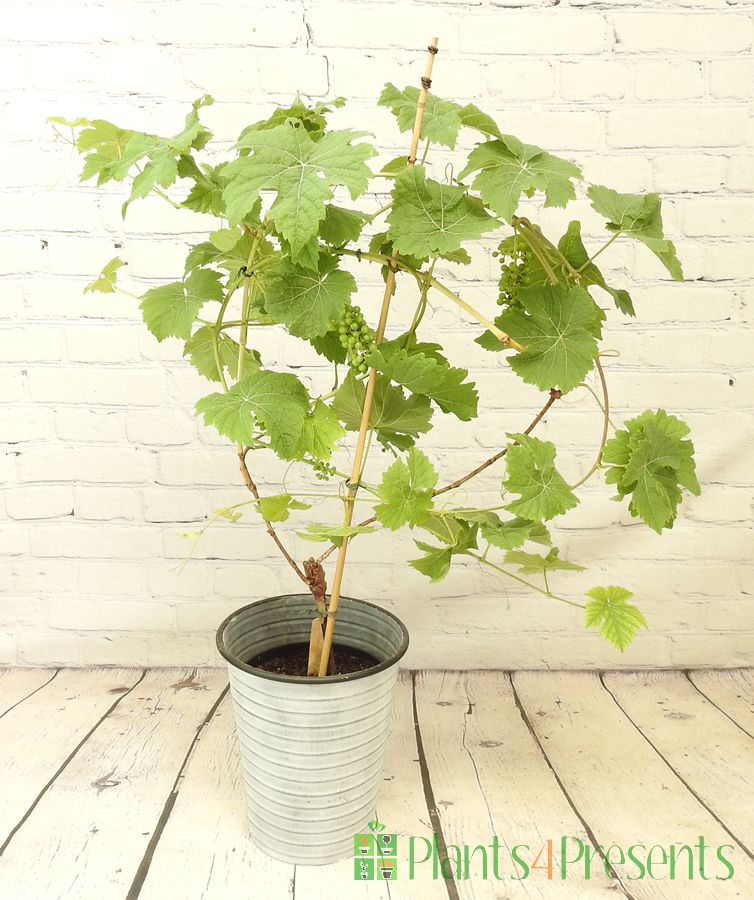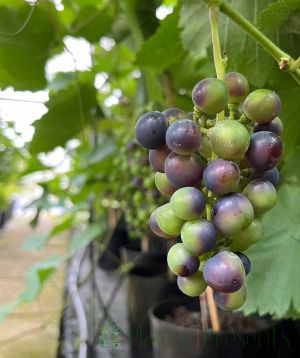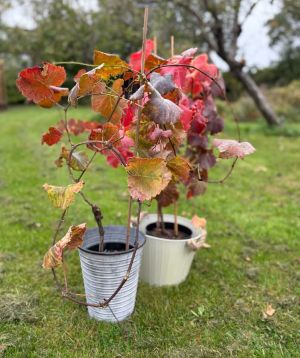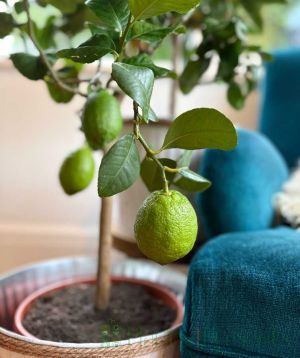Large Johanniter Grapevine
In stock


- Mature vines, ready for a heavy harvest in 2026
- Will flourish in a warm, sunny spot
- Next or named day delivery just £6
These larger Johanniter vines are strong, British grown plants already in their fifth year now, a full year older than our other vines.
A superb early variety, they have grown on nicely over the summer months but have now lost their leaves for winter and will be delivered as dormant canes during the winter months.
Plant them out in a sunny spot in late autumn or early spring and they'll soon burst back in to life and you'll be enjoying tasty grapes from your own vine in 2026.
These vigorous grapevines make great gifts for gardeners or those who love to grow their own fruit. Choose a spot in the garden where the roots can remain cool but the leaves and branches can scramble up a sunny wall or trellis.
 5/ 5
2 reviews
5/ 5
2 reviews


Given as gift. Recipient was delighted and vine was as described on website

I personally haven’t seen the plant, but my daughter who is a keen gardener assured me it is lovely, healthy and well worth the money. Thank you again

These instructions are sent with the plant gift
Grape Vines are surprisingly well suited to the UK climate. In the right spot they are vigorous growers and can produce heavy crops of fruit in August and October.
Johanniter is used to make a variety of wines, but in a sunny spot these green grapes will ripen to be sweet and juicy enough to eat too. Bred to be frost resistant, they will do well in all parts of the UK and will put on fresh and vigorous leaf growth in the spring quickly filling out all through the summer providing a lovely leafy back drop to a garden.
Ideally your grapevine should be transplanted shortly after arrival either into a larger pot or barrel or into the ground. It will do best in a sunny and sheltered spot with shaded or cool roots in summer.
Grapevines can be planted at almost any time of year as long as the ground is frost free. Before planting, submerge the pot in a bucket of water for 10 minutes and add a top dressing of seaweed feed or fish, blood and bone to help it get settled in. If you want to keep your vine in its existing pot for a little longer for whatever reason, it will need regular watering, and will appreciate some ordinary liquid feed.
To get the best fruit from your grapevine, you will need to start pruning it next year. The results are well worth the effort!
Problem solving:
These Johanniter vines are grown to be resistant to fungal diseases, but prolonged damp conditions or irregular watering, can cause mildew none the less. If your plant is in a pot try moving it to a sunnier position and always train it to encourage airflow round each branch.
Grapevines are deciduous so don’t be alarmed if it drops its leaves over the winter. Different varieties are better suited to wine making or eating but don’t forget the more sunshine the fruits receive the sweeter the grapes will taste.











